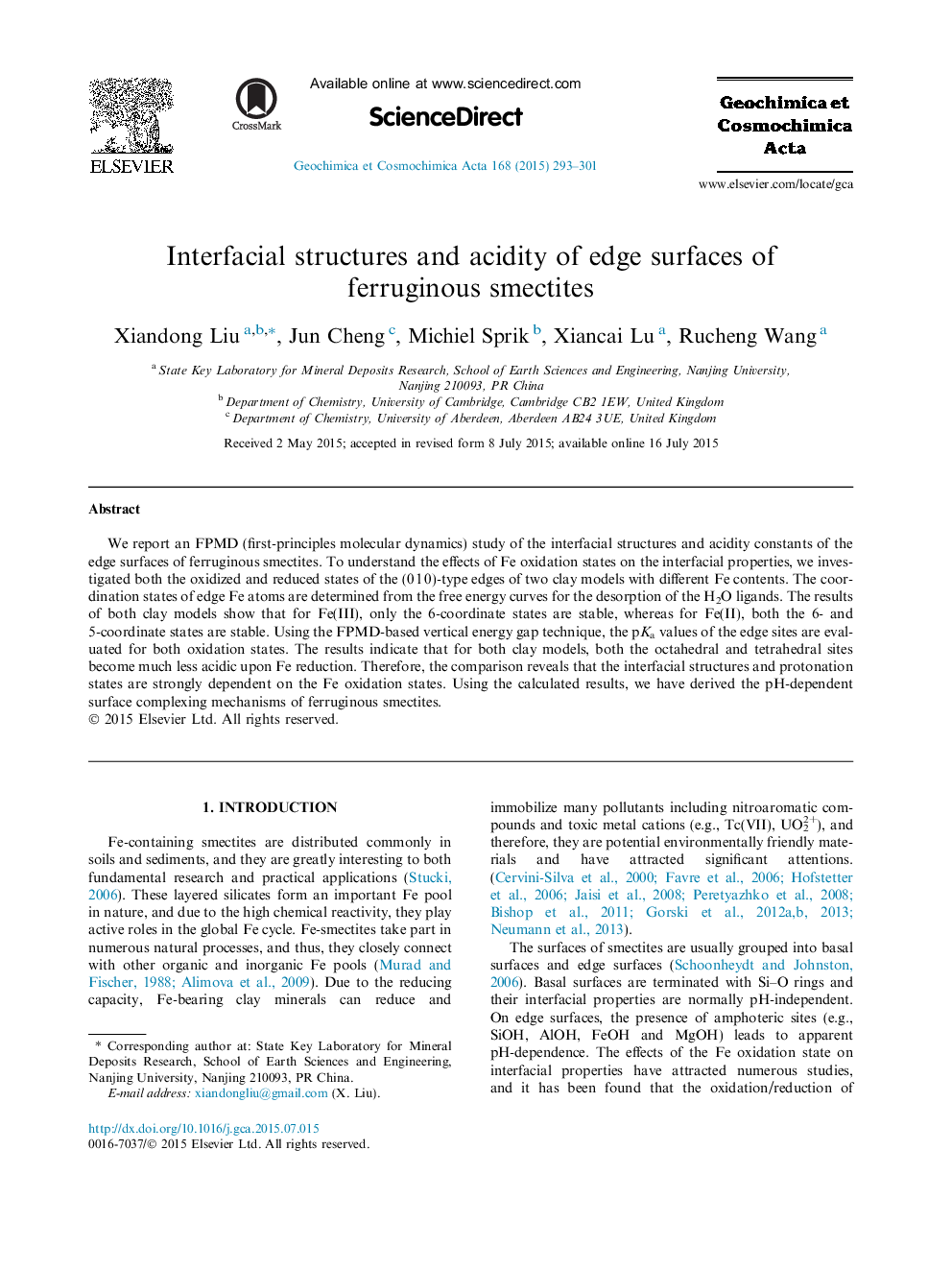| Article ID | Journal | Published Year | Pages | File Type |
|---|---|---|---|---|
| 4701882 | Geochimica et Cosmochimica Acta | 2015 | 9 Pages |
We report an FPMD (first-principles molecular dynamics) study of the interfacial structures and acidity constants of the edge surfaces of ferruginous smectites. To understand the effects of Fe oxidation states on the interfacial properties, we investigated both the oxidized and reduced states of the (0 1 0)-type edges of two clay models with different Fe contents. The coordination states of edge Fe atoms are determined from the free energy curves for the desorption of the H2O ligands. The results of both clay models show that for Fe(III), only the 6-coordinate states are stable, whereas for Fe(II), both the 6- and 5-coordinate states are stable. Using the FPMD-based vertical energy gap technique, the pKa values of the edge sites are evaluated for both oxidation states. The results indicate that for both clay models, both the octahedral and tetrahedral sites become much less acidic upon Fe reduction. Therefore, the comparison reveals that the interfacial structures and protonation states are strongly dependent on the Fe oxidation states. Using the calculated results, we have derived the pH-dependent surface complexing mechanisms of ferruginous smectites.
